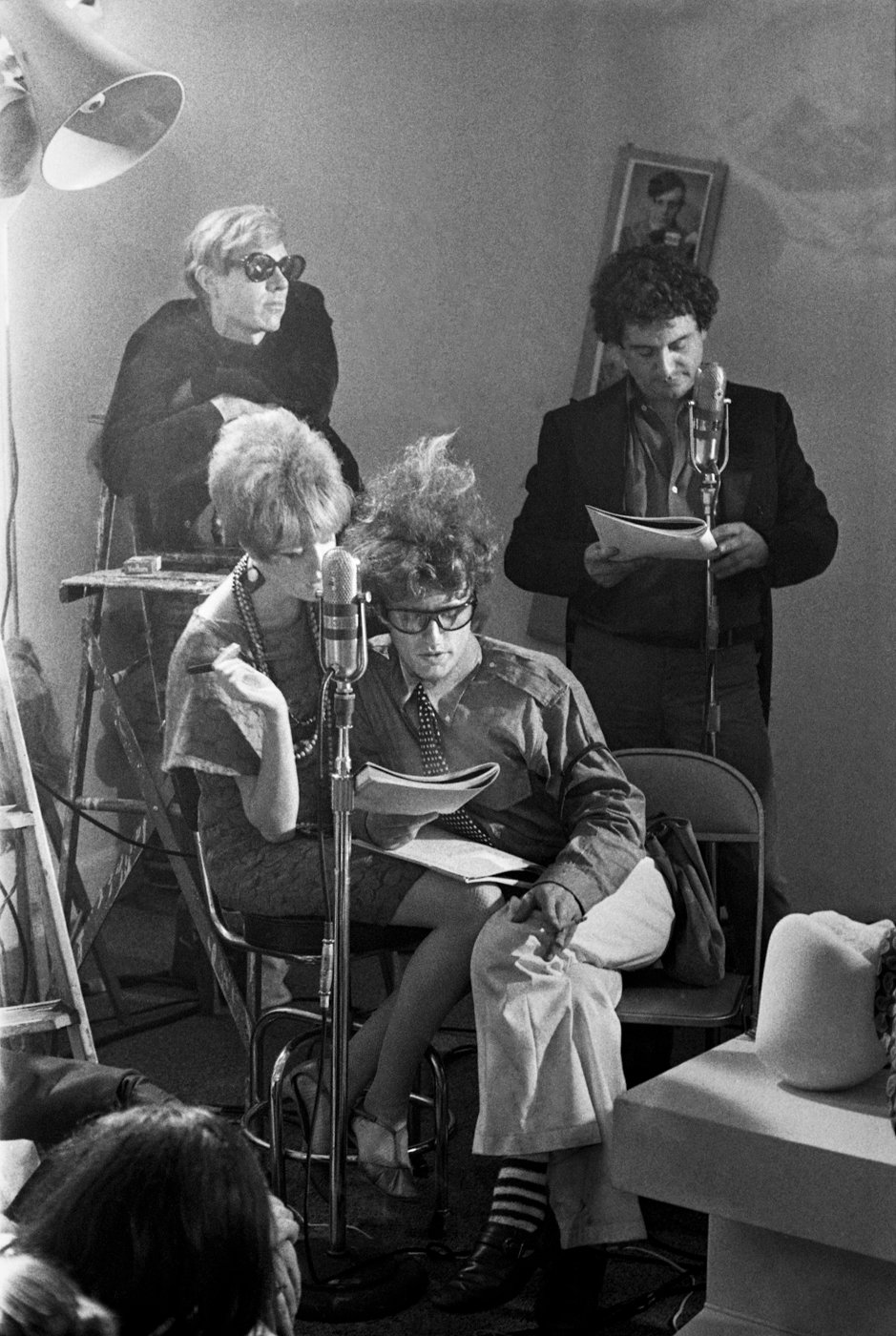
THE DAILY PIC (#1778): Ever since Larry Fink’s new book of Warhol shots came out a few weeks ago, there’s been much true talk about how full of elegance and insight they are. Some of them, as it turns out, are also full of information, even more exciting for a Warhol biographer like me.
Today’s Pic is captioned “Fashion Shoot” in the book, but it turns out that it’s more than that. With help from Warhol Museum super-sleuths Matt Wrbican and Greg Pierce, I’ve discovered that what we are looking at in this image is a September 7, 1966 reading of the play The Gas Heart by Dada artist Tristan Tzara, as newly translated by the filmmaker Robert Cordier (he’s at right in this image). Wrbican and Pierce put me on to the play’s flyer (below, from a Time Capsule in the Warhol archives), which mentions a cameo by Warhol but leaves out appearances by his ever-present Superstars Gerard Malanga and Ingrid Superstar, seen in front of Warhol in Fink’s photo. And then a glance I got at Fink’s contact sheets proved to me that it’s the same event, since the “Computer Woman” of the flyer is clearly visible in other shots.
But there’s more to this photo than a few random factoids. It drives home Warhol’s longstanding interest in Dada—he already knew it in his teenage years in Pittsburgh—and the relevance of that movement to Pop Art, which began life with the name neo-Dada.
I’ve done some deep digging into the very beginnings of Warhol’s career in Pop, and I’ve come to the conclusion that when he first began to make pictures based on comics and ads, the gesture was meant to feel as radical and absurdist as anything the Dadaists had come up with 50 years earlier. Warhol’s friend and dealer Ivan Karp once referred to Warhol’s first paintings as “blank, blunt, bleak stark.” It’s a shame that we’ve since learned to see them as less dangerous than that.
Dada really was the papa of Pop. (Photo ©Larry Fink; flyer courtesy the Andy Warhol Museum)
For a full survey of past Daily Pics visit blakegopnik.com/archive.